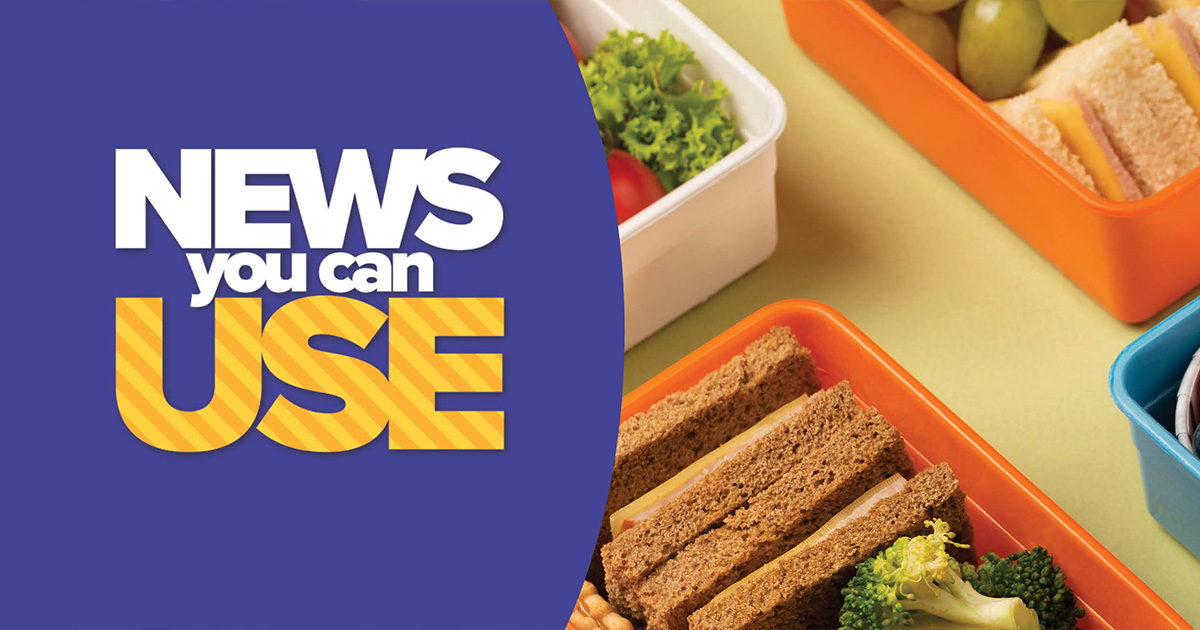
Summer holidays are nearly over, and with that, the never-ending requests for snacks that seem to come all day, every day. But a new year usually means a new lunchbox… so how do you fill them with nutritious food that will fuel your child with the energy they need for school and play?
The Rio Tinto Children’s Diabetes Centre at The Kids Research Institute Australia and Perth Children’s Hospital shares some top tips from Dietitian Melissa Kelly.
Lunchbox heroes: What should I include?
It’s important to pack a variety of foods from all five food groups: grains (bread or a wrap), fruit, vegetables, lean meat (or alternatives) and dairy (or alternatives). These foods will give your child a range of nutrients to support growth and development. Try to have both fruit AND vegetables in the lunchbox every day. Mix up the foods to keep it interesting – simple tricks like slicing a vegetable in a different way (like carrot circles instead of sticks) can make food seem more interesting to a child. Always make sure your child can open the containers and packages in their lunchbox independently. Do not feel pressured to give your child an Instagram-inspired lunchbox every day or spend a fortune on fancy or exotic foods – just aim for simple, nutritious ingredients.
What should I avoid?
Try to steer clear of individually packaged snack foods in your child’s lunchbox. They are often high in salt, added sugar or saturated fat – not to mention expensive! Avoid giving your child chocolate, biscuits, chips, and lollies in their lunchbox. The dietary guidelines recommend these are only eaten occasionally and in small amounts. Many packaged snack foods fall into this category and are high in energy (kilojoules) but very low in nutrients. But not all packaging is bad – things like tinned baby corn, packaged roasted chickpeas, tinned 4 bean mix or fruit (in natural juice, not syrup) can be good low-cost pantry staples for a child’s lunchbox. You should also try to avoid processed meats.
My child is a fussy eater – how do I get them to eat what I give them?
The key is to involve your child in the planning and preparation of their lunchbox. Sit down together and brainstorm ideas or offer them some choice in what you include. For example, you could say “what vegetable sticks would you like in your lunchbox today – carrot, capsicum or cucumber?” Try to include a “safe” food in the lunchbox – something you know they like and will eat. There may be some trial and error involved if you have a very fussy eater but giving a child some say in what you include can help.
The humble sandwich is a lunchbox staple. How can I make sure it is as nutritious as possible?
Not all breads are equal. If your child will eat wholemeal or multigrain bread, those are great options to increase their fibre intake. If you are using white bread, try to choose one that has added fibre. Check the Nutrition Information Panel on the bread’s packaging and look for at least 5g of dietary fibre “per 100g” column. Regardless of the bread, you can still include fibre-rich foods in the sandwich – grated carrot, lettuce and cucumber are great options. If your child does not like sandwiches, try other foods from the “grains and cereals” group like corn thins, wholemeal crackers or pasta. Dinner left-overs like rice and stir fry vegetables are also great lunchbox options.
Is it okay to put a “treat” in their lunchbox?
It is a good idea to avoid labelling foods as “treats” but rather foods your child enjoys but does not eat every day. These foods are different to every child and are not necessarily high in added sugar or salt. For example, blueberries instead of the humble banana may be special for some kids. Try to avoid any highly processed snacks in your child’s lunchbox.
What about food allergies in the classroom?
Always check to see if your child’s school has any rules around what foods can and can’t be included in lunchboxes. Many schools have policies around nuts, but some could have wider restrictions depending on allergies among the students. Be sure to check the ingredients of any foods you include in your child’s lunchbox to make sure nuts are not hidden in things like spreads or muesli bars. Nuts and nut pastes make an excellent, nutritious after-school snack.
My child comes home with a full lunchbox – what can I do?
My advice to parents who are worried that their child is not eating their lunch at school is to investigate. Is there something you are putting in the lunchbox that your child does not like? Can you work together to find something they would prefer? Is the food you’re giving them taking too long to eat? Can they open the packaging? As a parent or carer, your role is to decide what goes in your child’s lunchbox and how much you offer. It is your child’s role to decide how much they eat. If you are worried, it could be good to chat to the school and see if kids are encouraged to eat before they play. Try not to put pressure on your kids if they do not want to eat because they will not starve at school. Instead, offer a substantial afternoon tea when they finish school.
